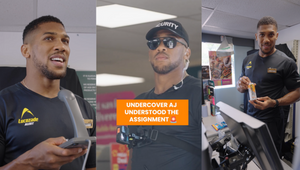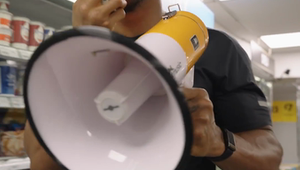
How Brands Can Win in the Age of #Frugalliving

Watered-down Weetabix, out-of-date mayo packets, and inherited hand towels. These are all money-saving tips shared by TikTok user @diaryofacheapskate. After paying off her mortgage in her early 30s, the anonymous 'Diary of a Cheapskate' is sharing her frugal life online in the ultimate de-influencing move. And, despite the criticism she’s faced (apparently, watering down your cereal is just a step too far) there are a host of frugal accounts taking social by storm.
Bradley, aka Bradley on a Budget (@baddie.brad), shares his experience paying off his debt and the extremities he goes to to save his cash. Anna Light (@thebudgetyears) shows her audience how to eat nutritious foods on extremely tight budgets. And Rosie Forshaw (@moneysavingrosie) gives her advice on living a frugal life with a toddler.
Last year, we saw the rise of #deinfluencing and #underconsumptioncore, but users like these are shifting the narrative, with #frugalliving emerging as the next dominant force. And this isn't merely about cutting costs; it's intentional consumerism – a radical shift in the entire online discourse around spending triggered by geopolitical fear, and financial and climate crisis-informed clarity, bringing a bigger purpose to buying.. But, how do you sell to an audience increasingly averse to buying?
Become a part of consumers’ lives
While it may seem like people aren’t making any purchases, that’s not the case. Consumers are instead purchasing with purpose. A mascara is no longer just a mascara; it’s an investment. With that in mind, brands need to show how their brand can be a central part of their audience’s lives, rather than a product to use and throw away.
Gymshark is doing this by creating rituals around their brand; its '66 Days [to] Change Your Life' challenge leaned on longevity, becoming a central part of people’s lives for at least 66 days. And to keep the audience engaged after the challenge, the community was encouraged to share their fitness goals and progress on social.
It’s time for a reality check
It’s not news to anyone that our purse strings are being pulled a little bit tighter these days, but brands don’t need to hide from the reality of their customers’ lives. By creating content that acknowledges the economic challenges facing them, and finding ways to show how their product is still essential, customers will feel understood and be more inclined to invest in the brand.
Natural deodorant brand, AKT, was applauded on social for its authentic portrayal of product use. In a move that was hailed as reflective of the realities of the cost of living crisis, their content showed people squeezing out the final remnants of their items, shot in everyday, un-styled bathrooms and bedrooms, rather than in unattainable model homes.
A long-term love affair
Finally, brands need to show the longevity of their product and showcase the products that bring joy beyond the initial purchase excitement. From sharing stories of well-loved, well-worn items to celebrate the lasting value of the product, it is all about showing that you are going to be around for a long time. From in-store refill stations to reimagined cardboard packaging, the opportunities are endless.
For example, British beauty brand Liz Earle leveraged the creator landscape with OG YouTuber, Zoe Sugg (aka Zoella), showing the long-term love she has for their product. In a daily vlog, Zoe showed herself across the years promoting the same product to her followers, finishing with her current self using the product in real time. There’s a true authenticity here which, when layered with the longevity of using the product, gives consumers trust and proves your product is something worth investing in.
As frugal living and intentional consumerism become everyday realities, brands need to align with consumers by authentically integrating into their lives, building lasting connections, and demonstrating product value beyond a single purchase.















